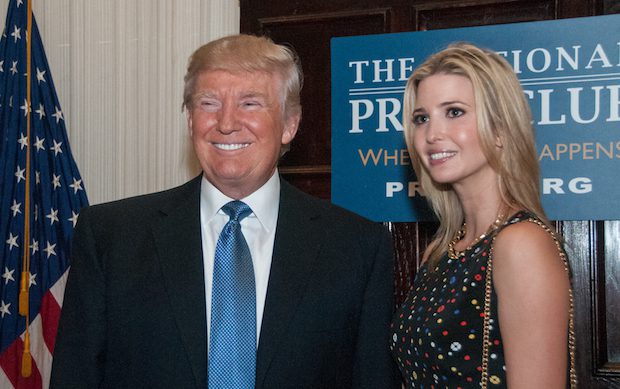The Inside Story Behind Trump’s Childcare Plan

Ivanka Trump’s speech to the Republican National Convention last July left many Republicans bewildered. With references to “equal pay for equal work” and the promise to make “quality childcare affordable and accessible for all,” some may have even thought they were at the wrong party’s convention.
Now, as the president’s daughter meets with lawmakers on Capitol Hill to help craft the exact language of her childcare plan, a former campaign aide has come forward to reveal that the bewilderment included many within Trump’s own policy team.
“We received a paper from Ivanka, a couple pages—I wouldn’t even call it a memo, it was more of a stream of consciousness—that basically articulated Ivanka’s vision of what she wanted to do on childcare,” the former aide, who asked to remain anonymous, told me. “I was concerned, and others on the campaign were also startled because it seemed like it could have come right out of Hillary Clinton’s playbook.”
The former campaign aide was nonetheless assigned the job of converting Ivanka’s memo into a coherent policy proposal, so he dug into the research literature, drawing on many traditionally conservative policy sources. His conclusion was that America did indeed have a childcare crisis, although one caused by a multifaceted culmination of factors, from regulatory burdens to a changing family structure.
“The demographic Ivanka had in mind was not the one we were ultimately competing for in the general election,” the former aide told me. “She was really just responding to Manhattan and elite urban circles.”
He added, “The work-life balance stuff you read about in The Atlantic or wherever reflects the particular interests of the media class. But the real childcare crisis in this country, in my estimation, is not an elite issue. It’s really in the heartland where there’s fairly dramatic family breakdown happening, and dysfunction in the parenting realm.”
The final memo reflected the aide’s limited-government and family-centered principles: “Most of my recommendations pointed to a deregulatory approach that would get government out of this equation.” And with the sign-off from others in the DC office, the memo got sent to the New York office.
That’s where things took a left turn. “I don’t know exactly what the deliberations were, but they made it clear that it was unacceptable, so they took the issue out of my hands,” the former aide explained to me. Soon after, at a September press conference, President Trump unveiled the final, Ivanka-fied version of the plan, with his daughter by his side.
The former aide was disappointed. “It was just a total sell-out to everything that the left has been clamoring for,” he said in response to the unveiling.
Since then, many more details about the plan have come out. At an estimated cost of $500 billion over ten years, it allows families to deduct childcare expenses from their taxes, up to the average cost of childcare in each state. The proposal also includes a new tax-free savings vehicle for childcare expenses, and a smaller tax credit for low income families. In total, the authors of a Tax Policy Center report on the plan estimate that families with children earning less than $40,000 per year “would see their after-tax income increase by a paltry $20 (less than 0.1 percent) on average.”
A far better approach—one that would actually improve the family stability of low income and rural households—would be a simple cash-based child benefit, payable to all families with children regardless of income, and fully funded by consolidating the potpourri of existing federal childcare programs. As I detail in a recent paper on the subject, countries like Canada that have followed this model have seen incredible progress in childhood health and well-being—and in a way that doesn’t discriminate against families with a stay-at-home parent.
Yet, recent reports indicate Ivanka Trump is doubling down and demanding her childcare proposal be a non-negotiable part of tax reform. This could drive yet another wedge into an initiative already beset by intense internal disagreement. But who could be surprised? Far from representing any kind of coherent conservative ideology, the Trump administration is a spectacle of ad hoc initiatives going around in circles—a carousel of hobbyhorses, of which Ivanka’s mammoth childcare subsidy is just one.
Of course, it is not too late for Republican lawmakers to jump off the carousel and push for a genuinely conservative approach to childcare. “I would applaud a plan that cut the size of government, cut taxes, and moved the government out of the sphere of family relations,” the former aide told me. “But one of the things that becomes quite clear when you really dig into this childcare issue is how few of the stakeholders are guided, as a primary interest, by the well-being of children. Maybe it shouldn’t be surprising.”
Samuel Hammond is the poverty and welfare policy analyst for the Niskanen Center.